|
Today I want to continue with more information from the symposium. Jean Luc wanted to clearly show us the incredible complexity of the horse’s body and allow us to think beyond the outside of the horse. Again, all images in this blog were found on Google Images. What is a functional straight hock? With a functional straight hock the horse impacts too early on hind leg. This results in the lower part of the leg not moving in conjunction with the upper joints. If a horse goes faster than its personal tempo (i.e. ridden too much forward) – then the speed causes them to stiffen their back which decreases movement in the lumbar / pelvis area and impedes the dorsal ventral movement – see picture below. A stiff back does not allow the pelvis to move the way it should and thus the hind leg impacts too soon. Therefore, riding too forward can do much more damage than good. Why, do you ask, do they often look better then at a higher speed? The stiffer back causes the limbs to move with more extravagance which can appear flashier. But as you are finding out at potentially great cost. Often the early impact of hind leg is caused by front legs being overloaded. If the front legs are overloaded (e.g. by riding the neck too low) then they cannot leave soon enough and effectively are in the way of the hind leg. Hyaluronic Acid Once damage has been done in joints they often get injected with hyaluronic acid. Hyaluronic acid has shown some excellent results. However, if used as “maintenance” and repeatedly it has shown to encourage the development of fibers inside the synovial fluid which makes it less effective. The best answer is to correct the movement of the joint to avoid further damage. The horse can lock its patella for resting. Deliberate locking of the patella locks all the joints below it. If the stifle extends too far then the patella will lock by accident. A horse can avoid the accidental lock. Better movement in horse comes from better movement in the pelvis. The dangers of asking for more “step-under” If I ask for more engagement of the hind leg and ask for it via spur, whip, or my leg then I can create an abnormal movement. For example, if the horse steps more under without matching movement in the pelvis then an over rotation in the hip occurs, which in turn rotates the femur wrong. The following extension of the leg behind the horse is often beyond 145 degrees and causes the patella to lock. The horse will respond quickly and avoid the accidental lock however damage to the stifle will occur. In addition, artificially created “engagement” of the hind legs without the proper movement in the pelvis causes stress on the SI joint. Canter can help The best gait to create move movement in the lumbar/pelvis area is the canter as it creates the dorsal-ventral flexion by itself. This would explain why many horses feel more “springy” at the trot after they have cantered. The ligaments around the joints are designed to absorb the impact and they are attached in different ways to allow for force from different directions. Looking at the front foot you can see a great number of various ligaments. The bone structure also plays a role. The Navicular Bone The navicular bone is there to make sure that coffin bone is always at the same angle. The wrong angle will cause damage. When you have a navicular problem you might have two issues:
Ring Bone Another problem caused by constant over loading of the front legs is ring bone. Ring bone is basically arthritis in the pastern joint or coffin joint. The arthritis has caused a bony structure in the joint and is quite painful for the horse.
What causes joint damage? The cause of any joint damage is usually abnormal kinematics. Abnormal kinematics can happen through overloading, stimulation of the limb (e.g. via whip), stiff back, wrong movement of the back or poorly designed exercises that cause wrong movement in the horse. As mentioned before over loading the front legs can happen in various ways:
With your new-found knowledge, you can now make some adjustments in your riding and training. Next time you are thinking about simply riding more forward to fix an issue, take a moment to think what might cause it and find a better solution. In my next blog, we will look at specific movements and typical problems and how to fix them. On February 18 and 19, 2017 Jean Luc Cornille of Science of Motion held his second annual symposium in Colorado. I will share some of my notes and thoughts from the symposium in a series of blogs. Jean Luc Cornille has developed Science of Motion over the course of well over 30 years. Trained by the Cadre Noir and showing internationally in three day eventing, he soon realized that many ideas that we held to be true have been proven false by modern science. I met Jean Luc a few years ago, and it has been an eye-opening journey. Many theories that I had learned over the years on biomechanics of the horse and on how to train and ride have been overturned by this new knowledge. While Jean Luc is the first guy to tell you to respect tradition, we also need to face new facts and studies. The development of new technology, slow motion video, ultra sound, bone scans, motion studies have shown us, that many theories are obsolete and we need to update our training accordingly. Often things will look a certain way on the outside and move or work completely different on the inside. Jean Luc’s goal is to educate and show us a better way of riding. I have learned that many injuries in horses are repetitive motion injuries. If a horse moves in wrong alignment, in the wrong balance, with tight muscles then an injury cannot be avoided in the long run. While it is important to use all means necessary to treat the injury, ultimately only correct movement can facilitate healing and prevent re-injury. Therefore, I had to let go of many training theories and exercises as the scientific evidence clearly shows that they are likely to cause injury. I must apologize to all the horses I have ridden and trained without this advanced knowledge. Jean Luc’s goal this year was to show us first the incredible complexity of the hind leg of the horse. He had a wonderful video of the skeleton of a hind leg. All the joints have been fitted with magnets so Jean Luc can move them in any direction and show us which movements are possible and which ones will cause damage. Let’s start with an overview of the hind leg. All images in this blog were found on Google Images. And here are the major joints – this drawing compares the front and the hind leg. Typically, in the hock you have extension and contraction but also rotation. Everything must work in perfect synchronization to avoid doing damage. The hock has 4 joints – if there is abnormal movement it will rotate the splint bone, which can cause suspensory problems. A hind leg suspensory problem is a kinematic abnormality – which means the hind leg moves incorrectly. In contrast, suspensory problems in the fore legs are normally caused by overloading them. In the hind leg, we basically have an unnatural movement of the bone which in turn causes these problems. The splint bones are big to stabilize the fetlock and handle stress. Why is the fetlock relatively small? To allow for speed. The horse has been designed to minimize weight in legs to increase speed. The splint bone is basically a secondary system to support the fetlock. The sesamoid bone keeps the tendon at a small distance from the bone which allows for more movement.
When foot hits the ground the energy does not go all into the ground. Within stride the following happens:
During the movement, the hock will rotate by a certain amount and that in turn also rotates the fetlock. If the rotation does not happen correctly it will create a shearing force within the hock, specifically between MT3 and T3. When the hind legs impact the two upper joints in the leg move together and the two lower joints also move together. |
SimoneFinding new and better ways to ride and teach. Archives
April 2020
Categories |

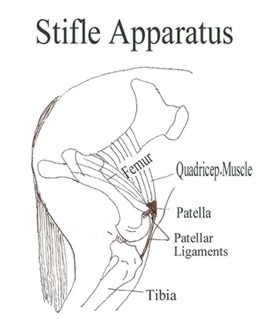
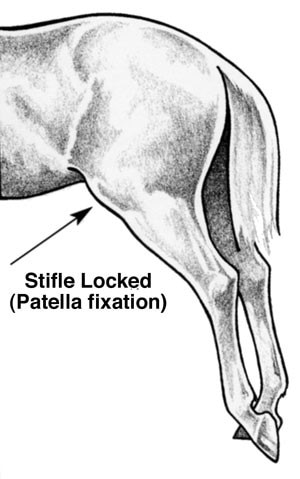
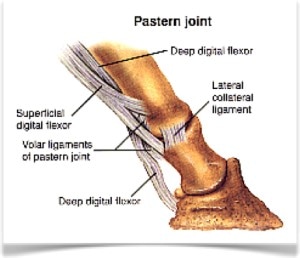

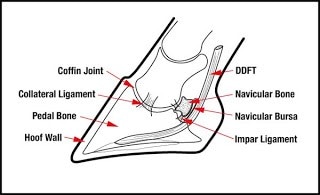



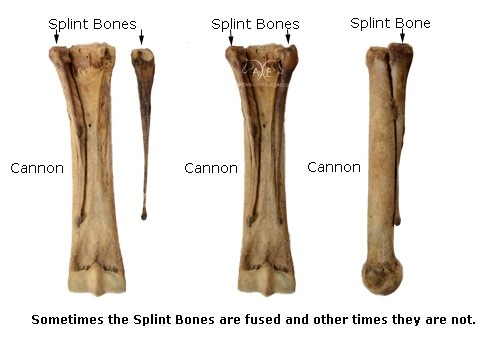

 RSS Feed
RSS Feed